Best Places For Scuba Diving In World
If you are looking to dive in a new place, you’ve probably been reading up on the Internet and asking other scuba divers where are the best places for scuba diving in world. I’ve compiled a list of what I believe are the best scuba diving in world spots.
If you’ve always been curious about the world of scuba diving, but never had the opportunity or courage to try it, we can help. We have googled list of the best places for scuba diving in the world. These destinations will not only allow you to enjoy one of the most exciting water sports, but also offer all-inclusive packages that are truly budget-friendly.
1. Great Barrier Reef, Australia
The Great Barrier Reef is one of the world’s most iconic natural wonders. It is also the largest coral reef system on Earth, stretching for over 2,000 kilometers along the coast of Queensland in northeastern Australia. The Great Barrier Reef is home to an incredible diversity of marine life, including over 1,500 species of fish, 400 types of coral, and countless other invertebrates. The reef also supports a wide range of threatened and endangered species, including turtles, dolphins, and dugongs.

Diving in the Great Barrier Reef is special because you’re not just going deep underwater to see some coral and fish – you are seeing another world entirely. It’s not just one reef either; there are over 900 islands that make up the Great Barrier Reef, each with its own unique ecosystem. This means there are endless opportunities for adventure.

There are so many reasons why people should consider doing a scuba diving course before heading off to explore the reef.
2. The Red Sea, Egypt
The Red Sea is one of the world’s most iconic bodies of water. It is home to an incredible diversity of marine life, including over 1,200 species of fish, and is a popular destination for scuba diving and snorkeling. The sea is also home to some of the world’s most beautiful coral reefs, which are threatened by pollution and overfishing.
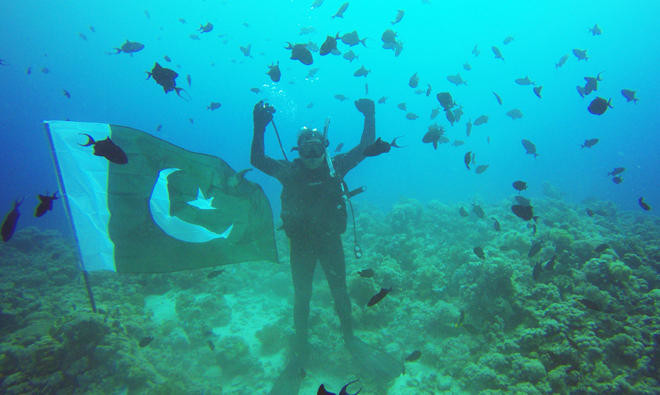
The Red Sea is like no other place in the world for scuba diving. The reef systems, teeming with an incredible variety of marine life, are unlike anything you will have seen before.
It is considered to be one of the top diving destinations in the world. It has a unique combination of exceptional visibility, abundant reefs and marine life, plus warm water temperatures all year round. The Red Sea is home to some of the most beautiful coral reefs in the world and because of its location, it is a popular destination for divers from all over.
It offers many different types of dives for every type of diver. There are reefs where the primary focus is on underwater photography, there are wrecks which are perfect for wreck divers, drift dives where you can see lots of fish and harder dives where you can see hammerhead sharks. In short, there is something for everyone in the Red Sea!
3. The Amazon River, South America
The Amazon River is the largest river in South America and one of the longest rivers in the world. It stretches for over 6,000 kilometers through Brazil, Peru, Colombia, and Bolivia. The Amazon River is home to an incredible diversity of plant and animal life, including over 3,000 species of fish. The river is also an important source of fresh water for the people who live in its basin.
This river is home to a number of unique aquatic species, all of which can be found on the river’s large body and its many tributaries. Despite this, scuba diving in the Amazon is not common due to the large volume of rain that falls into the river. Therefore, very little sunlight reaches a few meters below the surface.

However, some divers brave these waters to see what lies beneath. If you are interested in scuba diving in this river, here are a few things you should know:
The Amazon River’s water is mostly fresh, but it does have several small areas where salt water seeps in from the ocean. This affects the types of fish and other animals that can survive in any given area.
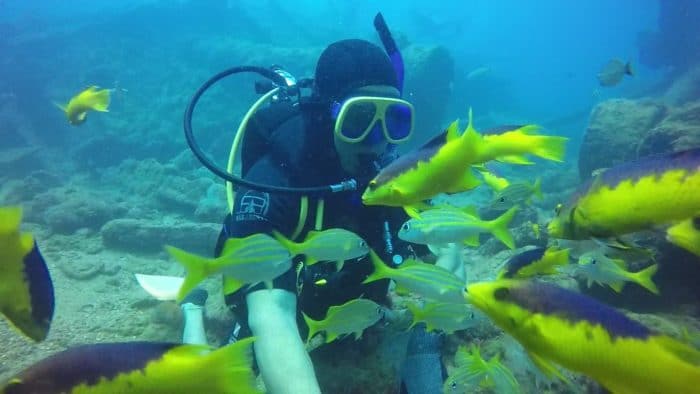
The best time for scuba diving in the Amazon River is from June through August when the water level is lowest and visibility is at its peak. However, this time of year also coincides with heavy rainfall and flash floods, so be prepared for potential danger.
If you want to dive at night (when most underwater creatures are active), be sure to bring a high-intensity torch or light source so you can see where you’re going while navigating through murky waters.
4. Victoria Falls, Zambia and Zimbabwe:
Victoria Falls is one of the world’s most iconic natural wonders. It is located on the Zambezi River between Zambia and Zimbabwe, and it is one of the largest waterfalls in the world. Victoria Falls is a popular destination for thrill seekers, as it is possible to bungee jump from the bridge that spans the gorge. The falls are also a popular spot for rafting and kayaking.

Visiting the Victoria Falls in Zimbabwe offers the unique experience of being able to combine an adrenaline activity like white-water rafting with a relaxing activity like scuba diving.
When scuba diving in Victoria Falls, you’ll be submerged in the Devil’s Pool, which is a small pool of water at the edge of a 100m drop over the waterfall. The pool is only accessible from mid-August to mid-January, when water levels are lower and a natural rock barrier is formed to stop divers going over the waterfall.

The pool is situated right on the border between Zambia and Zimbabwe, and both countries operate tours to it. While it’s possible to climb down to the pool independently, this is not advised as people have died doing so.
5. Chuuk Lagoon, Micronesia
Chuuk Lagoon is a world-famous scuba diving place located in the Federated States of Micronesia. The lagoon is home to an incredible diversity of marine life, including over 1,000 species of fish. The lagoon is also home to many shipwrecks, which attract divers from all over the world. Chuuk Lagoon is a popular destination for live-aboard dive boats.
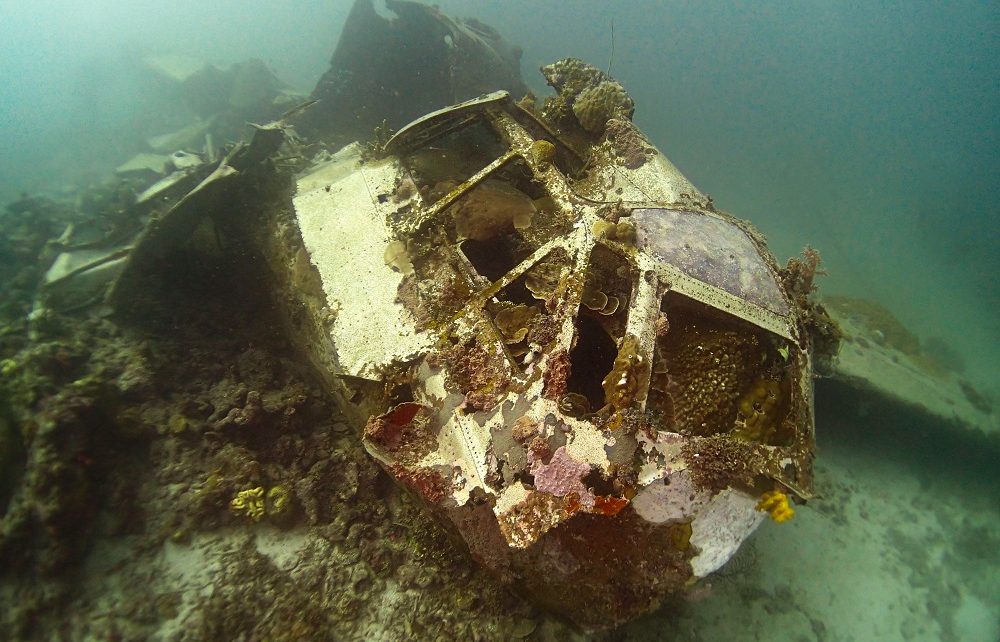
Thirty-four Japanese naval and merchant vessels, as well as some 300 airplanes, were sunk there during Operation Hailstone, one of the most important naval battles of the Second World War.
As a diver who enjoys wreck diving, I is keen to dive in Chuuk. But you would be even more excited by different opportunities photographing the legendary place using underwater camera.

It is also known as Truk Lagoon. In the past it was called Lagoon of Ghosts and Wrecks, as many of the wrecks were left untouched for decades until divers started exploring them in the 1960s.
6. Maldives
The Maldives is the best place to go scuba diving, especially if you are a beginner. The crystal clear waters and the warm weather make this activity very enjoyable.
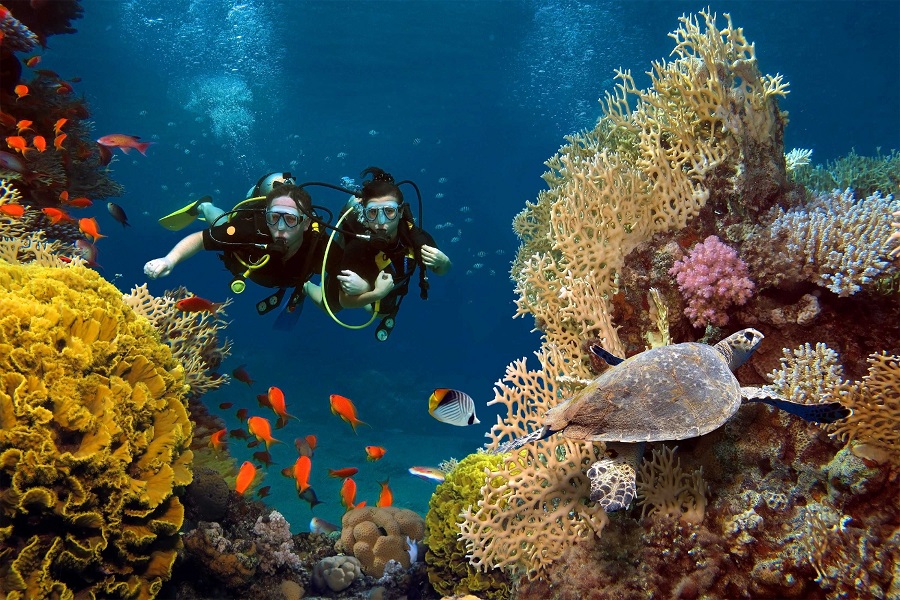
Many resorts around the Maldives offer scuba diving lessons and guided tours at affordable prices. These resorts have their own dive centers where they train new divers, give open water dives to advanced divers, and offer guided dives to intermediate divers.
The Maldives are located along a major shipping route between Europe and Asia. This means there can be strong currents at certain times of year as well as high waves during windy weather. The best diving conditions occur from October through May when the water tends to be calmer.
7. Ubud, Bali, Indonesia
The island of Bali is a world-class destination for divers. The warm tropical waters are teeming with life including an impressive variety of corals, fish and critters.
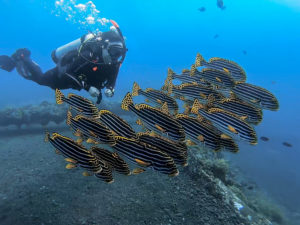
The diving in Bali is suitable for all levels of divers and snorkelers, but the best dive sites are found off the southeast coast around Nusa Penida and Nusa Lembongan where the currents make for great drift dives.
The Balinese are very friendly people and love to share their culture with visitors. There is always something new to discover on this beautiful volcanic island with its lush terraced rice paddies, towering sacred volcanoes and pristine beaches.
8. The Great Blue Hole, Belize
The Great Blue Hole, in Belize’s Lighthouse Reef, is one of the most famous dive sites in the world. It’s a huge round sinkhole almost 1000 feet across and more than 400 feet deep. From space, it looks like an eye staring back. It is home to an incredible diversity of marine life, including over 150 species of fish. The hole is also a popular spot for scuba diving and snorkeling.

The hole formed naturally during past ice ages when sea levels were much lower than they are now. The area was dry land and a cave system formed in the limestone rock. When the ice melted, the sea rose again and flooded the caves, leaving just the holes visible.
Another theory holds that it was carved by water draining from a lake on top of the surface through fissures in the limestone floor. The falling water would have caused an erosive effect that widened the cracks into a massive cavern, which eventually collapsed.
9. HaLong Bay, Vietnam
HaLong Bay is a world-famous scuba diving destination located in northeastern Vietnam. The best part about scuba diving in this Bay is that the water is so clear and clean that you can see the incredible underwater world from the surface.
“It’s like outer space on Earth,” said Carl Roessler, a scuba diver and underwater photographer who lives on the island of Koh Tao in Thailand. “The world is all blue and the light is beautiful.”
HaLong Bay is in eastern Vietnam, about three hours from Hanoi. In addition to being a UNESCO World Heritage Site, it’s a popular spot for scuba divers because of its numerous species of fish and coral.
Because of its karstic topography, which includes thousands of islands and caves, it’s also an easy place to get certified — there’s no current or waves and you can see everything clearly.
10. Cocos Island, Costa Rica
Cocos Island is a world-famous scuba diving destination located off the coast of Costa Rica. This Island is home to an incredible diversity of marine life, including over 500 species of fish. Cocos Island is also home to many shipwrecks, which attract divers from all over the world. Cocos Island is a popular destination for live-aboard dive boats.
In the last few years, diving in Cocos Island has become a world-class destination for shark lovers and underwater photographers. The teeming waters around this island, located about 350 miles off Costa Rica’s Pacific coast, are home to more than 30 species of sharks. If you’re there during the right season, you’ll have a good chance of spotting hammerheads, whitetips and blacktips circling the island by the hundreds.
.jpg)
Getting there is part of the adventure. Because flights to Cocos Island can be tricky, I highly recommend that you go with a travel agency that specializes in diving trips there.
Once you arrive on the island, be prepared for some serious diving. You’re likely to spend up to six hours every day underwater, making three or four dives each day. It’s not uncommon for divers to be in the water for nearly an hour at a time when they come across a large school of hammerheads or other sharks.
11. Silfra, Iceland
Silfra is a world-famous scuba diving destination located in Iceland. It is home to an incredible diversity of marine life, including over 300 species of fish. Silfra is also home to many shipwrecks, which attract divers from all over the world. This is a popular destination for live-aboard dive boats.
The Silfra is a fissure filled with fresh glacial water within the Pingvellir National Park in Iceland, and it is one of the country’s most popular diving sites. The crack opened between the North American and Eurasian continents, and although this is not a true ocean dive, it is unique in being a rare opportunity to dive between two tectonic plates.
While Silfra has long been a popular site for snorkelers because of its crystal-clear visibility, the diving at Silfra is definitely the way to go. The fissure extends for over a mile, so there’s plenty to see beyond what you could cover with a snorkel. Also, since the water comes from melting snow, it can be quite cold, and it takes some time for your body to adjust to that temperature. Wearing a drysuit definitely makes this much more comfortable!
The fissure winds through beautiful caves and tunnels before opening up into wider spaces where you can really enjoy the view. The color of the rock is spectacularly blue from all of the glacier meltwater filtering through; when combined with the clear water, it creates an unreal setting that’s even more amazing than I was expecting.”
12. Monterey Bay, California:
Monterey Bay is one of the most popular diving destinations in California. The bay receives an influx of cold water from major underwater canyons and upwelling zones, and this creates a rich marine environment that attracts a wide variety of sea life. Divers can easily find California sea lions, harbor seals, sea otters and whale sharks in the waters around Monterey Bay.
Scuba diving in Monterey Bay is an adventure. The bay offers a wide variety of dive sites, making it ideal for divers of all levels. From the famous breakwater to the Point Lobos pinnacles and beyond, there’s something for everyone. Many sites are protected from the open ocean by the breakwater and are classified as sheltered to semi-sheltered. Others are exposed to the open ocean and its swells and currents. Some sites are known for their sea life, while others offer interesting geology or unique topography.
The best time to go scuba diving in Monterey Bay is between June and September when visibility is at its best (up to 30m/100ft). Water temperature varies between 10°C/50°F and 15°C/60°F year round.
Conclusion
All places are best, the choice is yours!
